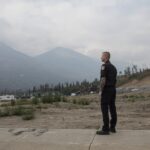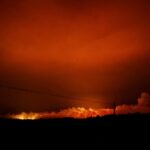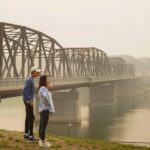The familiar scent of campfire might seem nostalgic, but when it blankets entire cities for days or weeks, that smoky haze transforms from a pleasant memory into something far more sinister. As wildfires rage with increasing frequency and intensity across Canada, millions are being exposed to potentially harmful smoke conditions that experts warn could have serious long-term health consequences.
“We’re witnessing unprecedented levels of exposure,” says Dr. Sarah Johnston, a respiratory specialist at the University of British Columbia. “What concerns us most is that this isn’t just a temporary inconvenience—we’re talking about significant health impacts that may last well beyond the fire season.”
Recent data from Environment Canada shows that more than 60 Canadian communities experienced air quality ratings deemed “very high risk” during the 2023 wildfire season, with some areas enduring these conditions for over 30 consecutive days. The fine particulate matter in wildfire smoke, known as PM2.5, is especially concerning because these microscopic particles can penetrate deep into the lungs and even enter the bloodstream.
For vulnerable populations—including children, the elderly, pregnant women, and those with pre-existing conditions like asthma or COPD—the risks are particularly acute. A study published in the Canadian Medical Association Journal found hospital admissions for respiratory issues increased by 18% in areas experiencing heavy wildfire smoke, with emergency room visits for asthma attacks spiking by nearly 25%.
“What many Canadians don’t realize is that even seemingly healthy individuals can suffer effects,” explains Dr. Michael Chen, an environmental health researcher at McGill University. “Headaches, irritated eyes, scratchy throat—these aren’t just annoyances. They’re your body telling you it’s under stress from environmental toxins.”
Beyond the immediate symptoms, emerging research from the University of Alberta points to potential long-term consequences including increased risk of cardiovascular disease, chronic respiratory conditions, and even certain cognitive impairments with prolonged or repeated exposure.
The economic impact is substantial as well. The Canadian Institute for Health Information estimates that health costs related to wildfire smoke exposure reached nearly $1.2 billion in 2023 alone, factoring in direct medical expenses and lost productivity.
Provincial health authorities across Canada have responded by establishing smoke forecasting systems and public health protocols, but experts suggest more comprehensive strategies are needed as climate change intensifies wildfire patterns. Some municipalities have created “clean air shelters” where vulnerable residents can seek refuge during severe smoke events.
Dr. Johnston emphasizes practical protective measures: “High-quality HEPA air purifiers can reduce indoor particulate matter by up to 90%. When outdoors, properly fitted N95 masks offer significant protection, unlike cloth masks which do little against these fine particles.”
For Canadians wondering when relief might come, climate scientists offer a sobering outlook. Research published in Nature Climate Change suggests that without dramatic intervention, wildfire seasons could extend by 20-30 days annually in many parts of North America by 2050, with corresponding increases in smoke exposure.
“This isn’t just an environmental issue or a health issue—it’s rapidly becoming one of the most significant public health challenges facing our country,” warns Dr. Chen. “We need coordinated action across all levels of government to address both the causes and consequences.”
As another summer approaches and communities across the country prepare for what experts predict could be another record-breaking fire season, the question remains: are we doing enough to protect ourselves from the invisible threat drifting through our skies, or have we merely accepted this as our new normal?

























